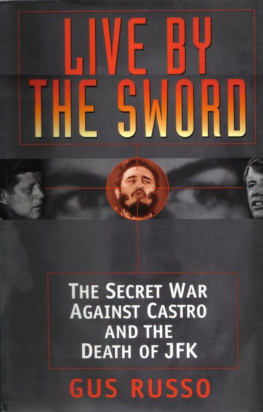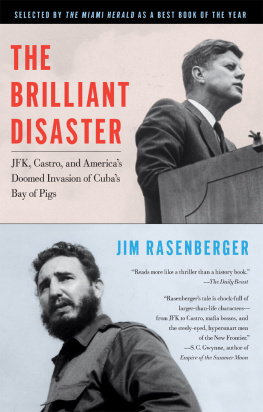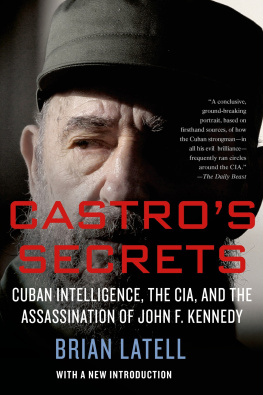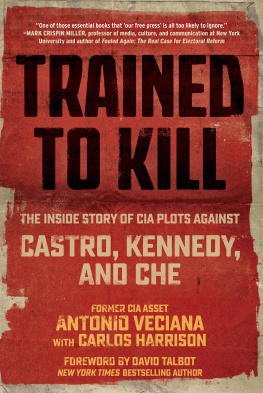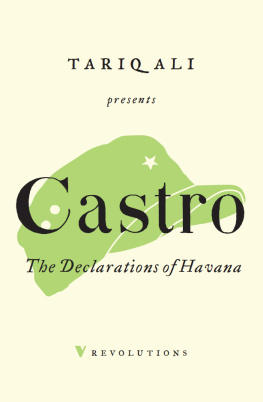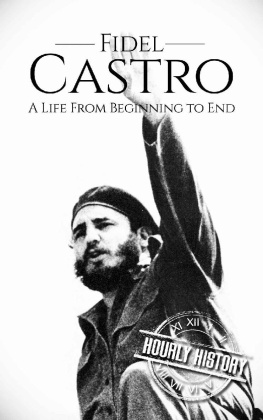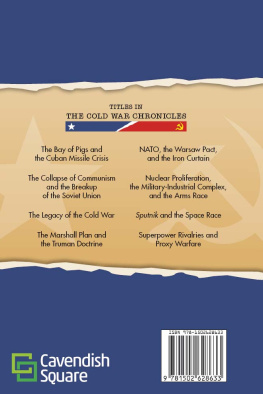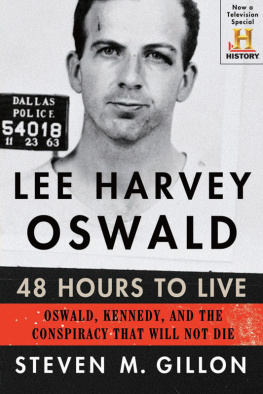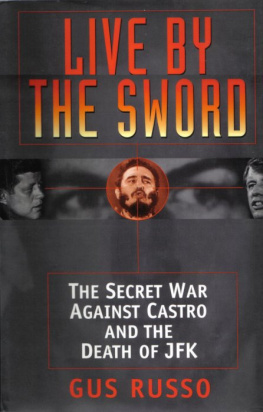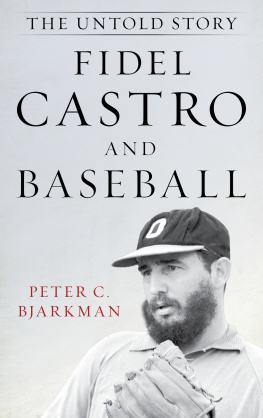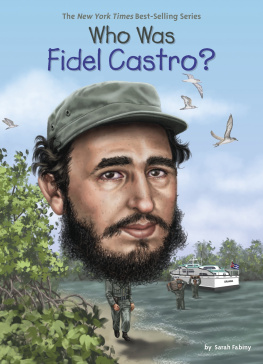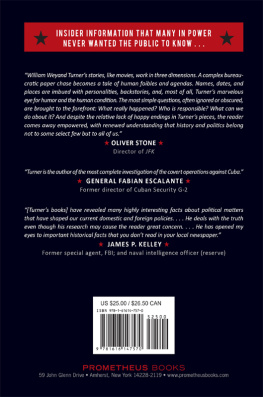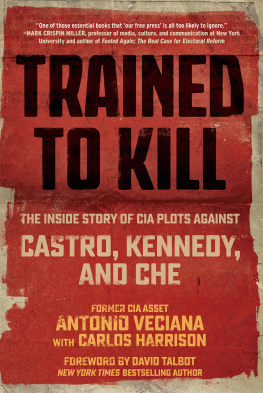
Copyright 1998 by Gus Russo
All Rights Reserved
Computer modeling pages 478-479
from the video, Secrets of a Homicide,
courtesy Dale Myers Animation.
(www.jfkfiles.com)
No parts of his book may be reproduced in any form or by any electronic means, including information and storage and retrieval systems, without permission in writing from the publisher, except by a reviewer, who may quote passages in a review.
Published by Bancroft Press
P.O. Box 65360, Baltimore, MD 21209
(800)637-7377 (for general inquiries) and
(888) 40-READS (for book orders)
www.bancroftpress.com
Library of Congress Catalog Card Number 98-072307
ISBN 978-1-89086-298-5
Printed in the United States of America
First Edition
1 3 5 7 9 F10 8 6 4 2
Distributed to the trade by National Book Network, Lanham, MD.
INTRODUCTION
O n November 22, 1963, the day President John F. Kennedy was assassinated, I was a 13-year-old freshman attending Mount St. Josephs High School, a Catholic school in Baltimore, Maryland. I remember exactly where I was when I heard the first whispered rumorin the hallway on my way to a sixth period biology class. I recollect just as distinctly what I heard: Some Cuban guy working for Castro shot the President! It wasnt long before I heard a new explanation for the presidents murder: It was a Russian agent working for Khrushchev! None of us knew which was the more shocking or potentially dangerous rumor.
In the blur of that first horrible day came yet another news report, this one stating that the President had been shot by a former Marine hiding in a book warehouse and using a German Mauser-type rifle. Hours later, the Dallas police took such a man into custody five miles away, in a Dallas movie theater. Two days later, by the end of that paralyzingly sad weekend, the story of JFKs assassination had turned 180 degrees: Now, according to most of the reports, the President had been shot in the back of the head by a Castro sympathizer using an Italian rifle.
I couldnt help but be intrigued.
After the suspect, Lee Harvey Oswald, was gunned down on the way from one Dallas jail to another, President Lyndon Johnson put together an august body, headed by Supreme Court Chief Justice Earl Warren, to find out definitively (or so it was thought) who had killed the president and why. Ten months later, without any equivocation, it concluded that Oswald, an American and a former Marine, had acted alone with no clear motive, and certainly without evidence of any involvement by Cuba, the Soviet Union, or any other foreign nation.
My own initial skepticism over the 1964 Warren Commission findings was fueled by the naivete (perhaps it was the arrogance) of a seasoned teenager who had read all the James Bond novels. I knew about spies, and fake defectors, and sharpshooters, and patsies. The government couldnt fool me! My suspicions were heightened by the obvious government secrecy over the investigation, especially the sealing of the Warren Commission records for 75 years. Thus, I, like many of my age group, became an amateur investigator pursuing the ultimate truthwhat exactly happened on November 22, 1963.
In 1966, with the publication of Mark Lanes book Rush to Judgment, I became convinced that the government itself was covering up the true nature and cause of the JFK assassination. Others, encouraged by the popularity of Lanes book, accused the federal government of conspiring to murder JFK. Years later, I would come to realize Lanes tome for what it was: a lawyers masterful brief for his client, the deceased Lee Oswald. Reading it as a teenager, I had no inkling of the ease with which a competent attorney could find discrepancies in any murder investigation, let alone one in which 25,000 interviews were conducted. In truth, Lane went far beyond the pale, taking evidence and testimony so far out of context that their original import (if any) was unrecognizable. His treatment of Jack Rubys testimony was a virtual masterpiece of lawyerly obfuscation. But it took a while for me to come to this realization.
In 1968, I gravitated to the anti-war candidacy of Robert Kennedy, spending many an after-school evening as a volunteer in his presidential campaign headquarters. It was there that a senior RFK aide told me obliquely of Bobbys secret investigations into his brothers death. In June of 1968, I was to attend a picnic, for campaign volunteers, at RFKs Hickory Hill home, where I hoped to ask the Senator about his interest in President Kennedys death. Instead of a picnic, however, there was a funeral. The tragic assassination of Robert Kennedy in June of 1968 only strengthened the sense of paranoia many of us were feeling. My interest in JFKs murder intensified. I was hooked.
In my early investigations, which began soon after Bobbys death, I called witnesses on the phone and heard their stories first-hand. I tracked down some hard-to-find players (and got them to talk). I began assisting on research projects that others were doing for books, magazine articles, and television specials.
With the bootleg release of the Zapruder film in 1975, conspiracy fever reached its high mark. The home movie seemed to show JFK reacting to a shot from the front, while Oswalds snipers nest (as termed by the Warren Commission) had been behind the presidential motorcade. Like many others, I was convinced that the Zapruder film proved Kennedy was shot from the front. I also was persuaded that Oswald wasnt a talented enough shooter to pull off the shooting alone. On both counts, I was wrong.
This entire periodfrom 1963 through 1975was marked by a continual barrage of ideologically-driven books on the Kennedy assassination. Ideologues are dangerous enough, but the books and authors of this time inspired a clique of followers, all with a pathological hatred of the U.S. government. These conspirati would make any leap of logic necessary in order to say that Lee Oswald had been an unwitting pawn of the evil government conspirators. And anyone believing otherwise was branded as a CIA agent (more than one prominent critic has labeled me as such), or a gullible lackey. The atmosphere of intellectual anarchy frightened off almost every serious historian. If they looked at the Kennedy murder, they concluded, they too would be branded as kooks.
When the House Select Committee on Assassinations (HSCA) began gearing up in 1978, I spoke often with its staff members, directing them to areas I believed important. It was their meticulous photographic, forensic, and ballistic work that convinced me that Oswald alone shot President Kennedy. From that point on, only one question remained for me to answer: Was Oswald a hired gun?
Over the next dozen years, I suggested to numerous broadcast entities that they should reinvestigate the Kennedy assassination in a long-form TV documentary. PBS showed some interest, and a research grant I was given produced some interesting interviews. But none of the media wanted to pursue the matter further.
Temporarily abandoning the idea of a documentary, I resuscitated an old fictional screenplay I had written as a roman clef on the Kennedy killing. However, in the Hollywood of 1990, the number of directors interested in making political statements could be counted on one finger. His name was Oliver Stone.
The brilliantly talented Stone seemingly showed interest in my screenplay. By sheer coincidence, and unbeknownst to me, the powerful filmmaker had recently decided to write and direct a film on JFKs murder. I was invited to meet with Stone in Dallas. To my shock, Stone informed me, apparently without consulting anyone who had studied the case for decades, that he would base his film on the most flawed and controversial character ever connected with it, the District Attorney of New Orleans, Jim Garrison. Stone said he rejected my screenplay, among other reasons, because it was a work of fiction. In the drink-filled haze of the Stoneleigh Hotel bar, I tried to tell him that Garrisons story was fictional, too. At the same time, Stone also plunked down $80,000 for the rights to an obviously concocted story peddled by some local entrepreneurs. Their tale purported to prove that a Dallas cop, moonlighting as an international assassin, really had shot Kennedy.
Next page
